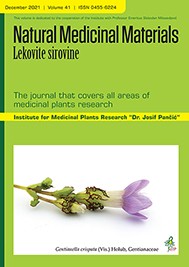Biomedicinal Research Centre, Forestry Research Institute of Nigeria , Jericho Hills Ibadan , Nigeria
Biomedicinal Research Centre, Forestry Research Institute of Nigeria , Jericho Hills Ibadan , Nigeria
Biomedicinal Research Centre, Forestry Research Institute of Nigeria , Jericho Hills Ibadan , Nigeria
Bear’s breech or mountain thistle (Acanthus montanus (Nees) T. Anderson) is a shrub belonging to Acanthaceae family. It is widespread in Africa, Romania, Greece, and Eastern Mediterranean. African people engage its medicinal use for the management of urethral pain, endometritis, urogenital infections, urinary disease, aches and pains. Fresh leaves of A. montanus were collected from Forestry Research Institute of Nigeria (FRIN) herbal garden and identified at the Forestry Herbarium, Ibadan. About 200 g of the powered sample was macerated in 400 mL each of three organic solvents such as ethyl acetate, acetone and methanol respectively, for 24 h. Each extracts were screened for phytochemicals such as flavonoids, saponins, phenols, terpenoids, phlobotannins, alkaloids, tannins, and cardiac glycosides. Estimation of total flavonol content, and antioxidant assays such as 2,2-diphenyl-1-picrylhydrazyl (DPPH) and nitric oxide radical scavenging activity were also carried out. The quantitative phytochemical test (flavonol content) revealed that Acanthus montanus methanol extract was the richest one among the solvent systems while acetone extract gave the best antioxidant activity. It was observed that the antioxidant activity could be attributed to moderately polar extracts. The study, therefore, provides evidence that various solvents used in extraction can result in differences in quantitative phytochemicals and antioxidant activity.
This is an open access article distributed under the Creative Commons Attribution License which permits unrestricted use, distribution, and reproduction in any medium, provided the original work is properly cited.

The statements, opinions and data contained in the journal are solely those of the individual authors and contributors and not of the publisher and the editor(s). We stay neutral with regard to jurisdictional claims in published maps and institutional affiliations.